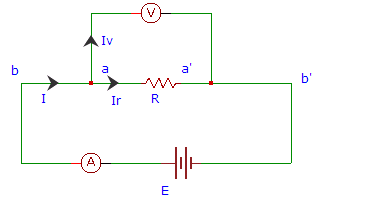1. Wheatstone bridge is used to measure the d.c. resistance of various types of wires for _________
a) determining their effective resistance
b) computing the power dissipation
c) quality control of wire
d) maintaining a source of constant e.m.f
Explanation: Wheatstone bridge is used to measure the d.c. resistance of various types of wires for controlling the quality of the wires. Voltage source maintains a constant e.m.f in the bridge circuit
2. Telephone companies make use of the Wheatstone bridge for _________
a) measuring the telephone resistance
b) computing the line strength
c) maintaining dialtone
d) locating the cable faults
Explanation: Cable faults in telephones can be located by telephone companies by making use of a Wheatstone bridge. Telephonic resistances are determined using suitable techniques. Dialtone is maintained through optical fibre technology.
3. The types of faults in a telephone line are ________
a) line to line or line to ground
b) triple line to line or line to ground
c) open circuit and short circuit
d) symmetrical and unsymmetrical
Explanation: In a telephone line, line to line and line to ground faults occur. Symmetrical, unsymmetrical, open circuit, short circuit, triple line to line and line to ground faults occur in power systems.
4. How can a Wheatstone bridge be used for the measurement of physical parameters?
a) in conjunction with a rectifier
b) along with an op amp
c) by connecting it to a thermistor
d) by making use of a transducer
Explanation:A Wheatstone bridge can be used for the measurement of physical parameters such as temperature, strain, light, etc by making use of an operational amplifier. Rectifier circuits are used for the conversion of ac to dc.
5. By using the variations on a Wheatstone bridge we can _________
a) measure quantities such as voltage, current and power
b) measure high resistance values
c) measure quantities such as complex power
d) measure quantities such as capacitance, inductance and impedance
Explanation: In its simplest form a Whetstone bridge consists of resistive arms. A Wheatstone bridge is used for the measurement of quantities such as capacitance, inductance and impedance by making use of the variations.
6. One of the simplest applications of a Wheatstone bridge is ________
a) voltage measurement
b) current measurement
c) light measurement
d) power measurement
Explanation: Wheatstone bridge consists of simple resistances in the ratio arms. One of the simplest applications of a Wheatstone bridge is the measurement of light by making use of a photo resistive device.
7. Thermal compensation can be provided in a Wheatstone bridge by ________
a) using more than one resistive sensor
b) making use of a heat sink
c) using cooling fans
d) immersing the circuit into a liquid
Explanation:By making use of more than one resistive sensor within the four arms of a Wheatstone bridge we get a full bridge, half bridge or a quarter bridge setup with an automatic balancing effect.
8. Low resistance refers to _________
a) resistances of the order of 1ῼ
b) resistances of the order of 1kῼ
c) resistances of the order of 1mῼ
d) resistances of the order of 1Mῼ
Explanation: Low resistance refers to resistance of the order of 1ῼ or less than that. Medium resistances range from above 1ῼ to a few kῼ. Any resistance value greater than a few kῼ is known as high resistance.
9. What is the significance of measuring low resistances?
a) voltage drop across the circuit is high
b) contact and lead resistances are appreciable
c) there is no power loss
d) no current flows through the bridge circuit
Explanation: When measuring low resistances of the order of 1 ῼ or even less, lead and contact resistances of the order of even 0.002 ῼ cannot be neglected. High currents flow through low resistance circuits
10. Below Figure represents?
a) construction of medium resistance
b) construction of high resistance
c) construction of low resistance
d) construction of very low resistance
Explanation: Illustrates the construction of low resistance. A is an ammeter used to measure current through the circuit, while V is the voltmeter used to measure voltage.
